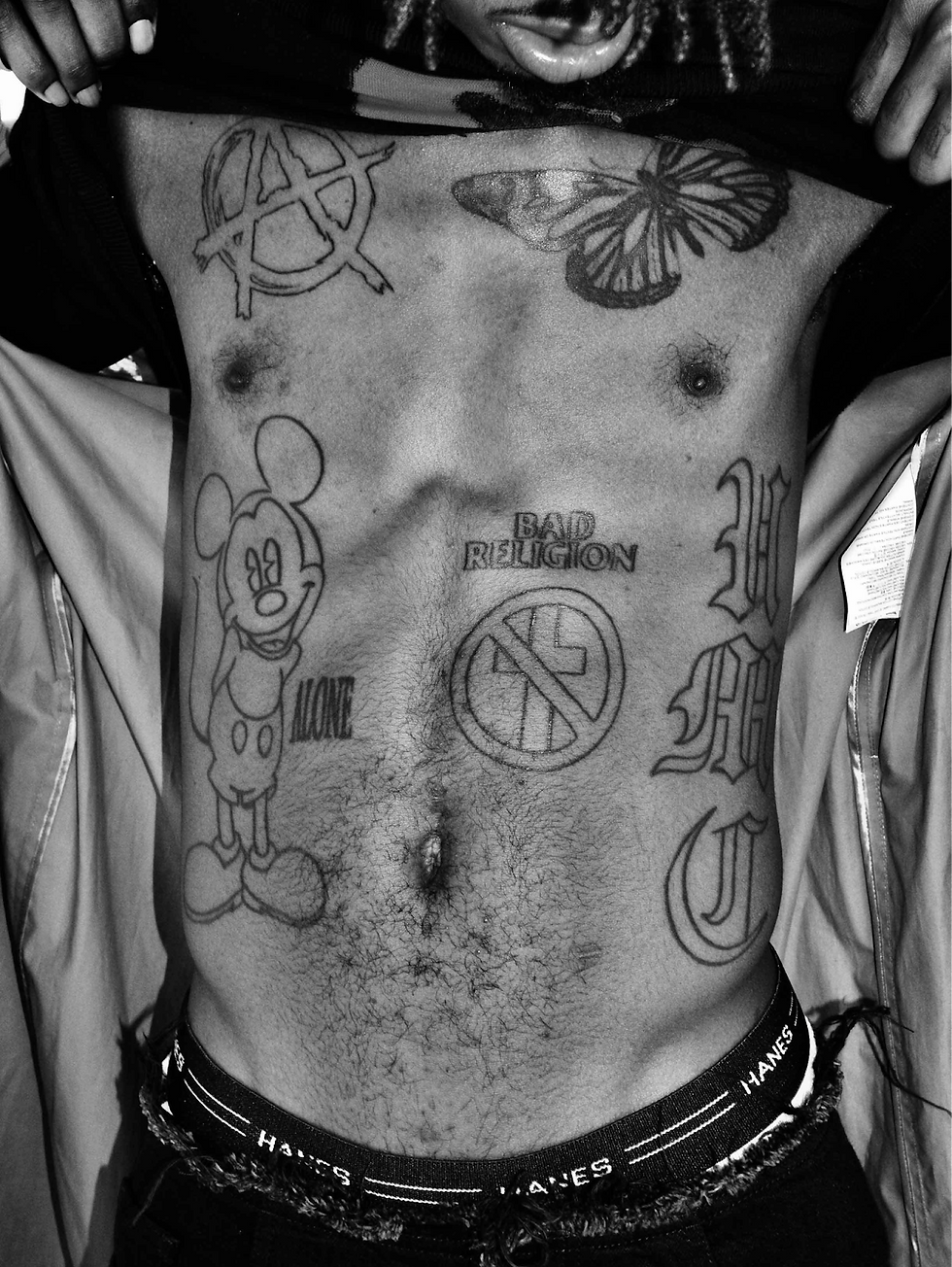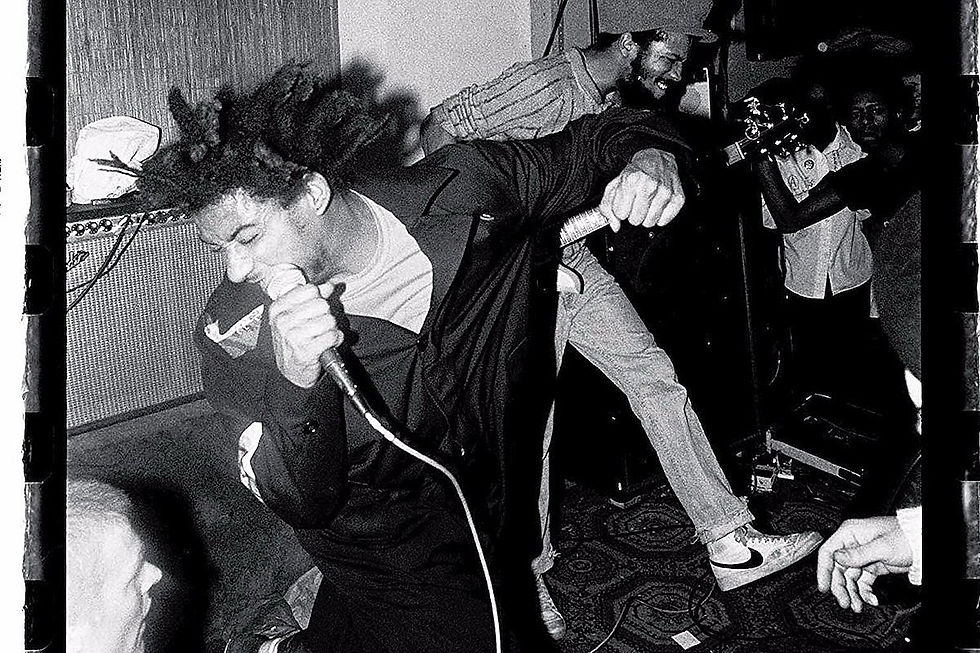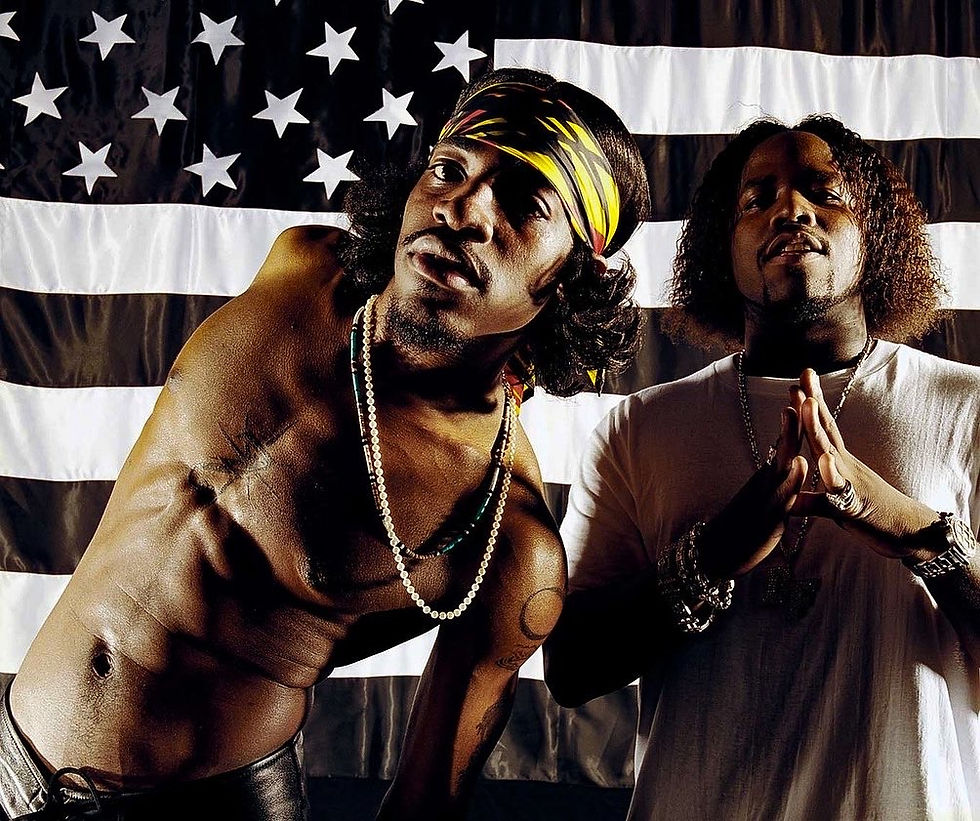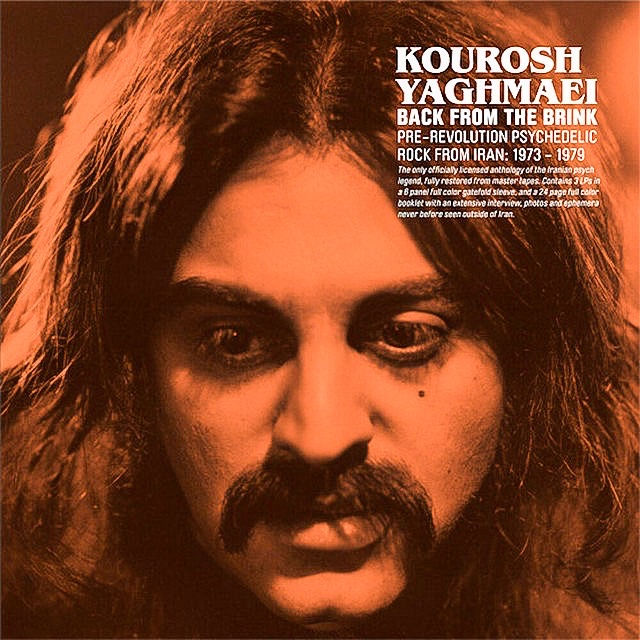PLAYBOI CARTI AND THE PUNK-HIP-HOP REVOLUTION
- Olivia Tai

- Oct 24, 2023
- 6 min read
Updated: Nov 12, 2023
Pushing the boundaries of conventional hip hop, artists like Playboi Carti pioneer a new era of gritty, subversive anarcho-punk rap.

In today's dynamic musical landscape, anything goes. Like a giant, musical melting pot, genre boundaries begin dissolving as artists draw inspiration from a diverse array of musical styles.
Within this theoretical pot of cross-cultural gumbo, the most unwitting of genres begin to emerge.
The freshest concoction from this splendid sonic fusion? Anarcho-Punk Rap. The founding patriarch of this musical rebellion? Playboi Carti. Yes, you read that right. Chart-topping, Atlanta-born, SoundCloud rap sensation Playboi Carti.
A PUNK MONK IN THE MAKING
It’s no secret that Playboi Carti holds a god-like status in the realm of contemporary rap. His most recent album,Whole Lotta Red (2020), became an instant success debuting at #1 in the charts. Despite this triumph in the charts, it was met with many mixed reviews.
While Pitchfork called it “wildly innovative” and “unlike anything else happening in mainstream rap,” many casual listeners were turned off by Carti’s discordant backing tracks, odd vocal inflections, and raspy, aggressive delivery. Previously celebrated for his catchy, cloud-rap party hits like "Magnolia" and "Wokeuplikethis," this album marked a feasible departure from Carti's earlier tracks.
Undeniably, Carti's sound was changing. What could have catalyzed such a shift?
Unbeknownst to many, Playboi Carti has harbored a long-standing love for punk music. For super-fans, this should come as no surprise; Carti had been dropping hints about his admiration for punk culture as far back as his 2017 self-titled album, Playboi Carti.
Although sonically, the album exhibited very little influence of punk music, the album art provided subtle aesthetic clues.
Carti's choice of apparel, a vintage Vivienne Westwood piece- a “Destroy Seditionaries” shirt, appeared identical to the one worn by Sid Vicious in the 1979 music video for quintessential punk anthem, “God Save the Queen."
 |  |
Playboi Carti (2017) | The Sex Pistol's "God Save the Queen" (1979) |
While this may have been the first time Carti displayed feasible ties to punk culture, it was far from being the last. The cover of his 2018 album Die Lit referenced a similar punk ethos.
In a 2018 COMPLEX article entitled “Die Lit: Photographing Playboi Carti's Punk-Inspired Album Cover,” photographer Nick Waller explained that the iconic album art paid homage to the high-energy intensity of 1970s punk shows.
“The concept of the cover was based around a reference photo of an old punk rock show… Carti's music really goes against the grain, too, just like punk used to do back in the day.” -Nick Waller for COMPLEX
Ingenious internet sleuths recognized the influence of Charles Peterson, who photographed punk and alternative legends like Black Flag, Nirvana, and Hole.
 |  |
Die Lit (2018) | A stage diver at a Nirvana concert at the University of Washington in 1990, captured by Charles Peterson |
Not only borrowing from punk aesthetically, this album explored a more experimental style than his previous releases. Die Lit introduced Carti's distinctive "baby voice," in which he raps in a high-pitched, sometimes unintelligible manner. This unique vocal style appeared unprecedented within mainstream rap during that era (a year when J. Cole, Mac Miller, and Pusha T dominated the charts).
No longer confined within the normative expectations of the rap industry, Carti's music shifted its focus away from the content and meaning of the lyrics. Instead, it emphasized his vocals complementing the mood and energy of the music itself. To some listeners, this transformation seemed reminiscent of old-school punk music like Bad Brains, known for their unconventional yelps and nearly indecipherable lyrics.
Carti's third studio album, Whole Lotta Red displayed his third nod to punk culture. Embracing a noticeably edgier, unconventional sound, Carti even included a track titled "Punk Monk," leaving no more room for ambiguity in his references to the genre.
 |  |
Whole Lotta Red (2020) | Dave Vanian of The Damned for Slash (1977) |
Even the album art itself was a tribute to punk culture, bearing a striking resemblance to a 1977 cover of Slash magazine, a Los Angeles based punk publication. The specific cover Carti referenced featured Dave Vanian of The Damned.
Clearly, Carti’s affiliation with punk and hardcore culture have become increasingly more conspicuous. Has Carti always been a closeted punk rocker? All signs point to yes.

In fact, Carti's long-term commitment to punk has been incredibly visible, quite literally inked onto his skin. Not only sporting tattoos referencing punk iconography (eg: The anarchist circle-A popularized by 1970s punk band Crass), Carti also has tattoos dedicated to bands like Bad Religion, Slayer, and the Finnish heavy metal band Hymn.
PUNK AND RAP: BRIDGING THE HISTORICAL DIVIDE
While Playboi Carti may currently be the most prominent rapper merging the genres of punk and hip hop, he is certainly not the rapper to do this. A brief look into the history of these genres reveal that these subcultures have been quietly intermingling for decades.
In a sense, punk and rap culture have shared a parallel evolution since the 1970s. United by a common outsider status, both genres forged identities defiant of industry constraints and expectations, rejecting the allure of radio play and commercial success in favor of crafting raw, unadulterated art.
“[By the 1970s], the Hip-Hop and Punk communities already had a large amount of cultural exchange, ranging from punks picking up graffiti, to exchanges of fashion. The two cultures even started skateboarding together, which furthered the camaraderie and blurring between Hip-Hop and Punk communities.” -Zach Gay, "Historic Alliances Between Hip-Hop and Punk"
However, even though these music genres shared a common rebellious, anti-establishment theme, they remained distinctly divided due to the racial composition of their audience. Punk initially emerged as a genre dominated by angsty, working-class white men.

It wasn't until artists like Bad Brains, Pure Hell, and Death emerged that people of color began to integrate into punk. Even then, being a person of color in the punk scene often meant standing out as an exception among your peers.
“Nobody was listening to rock back then…It was strictly hardcore rap, and if you listened to anything else, they’d call it white boy music.” -OGM of experimental rap group Ho99o9
The stigma surrounding this genre-racial divide began to weaken in the following decade. Punk rockers and hip-hop heads began to recognize a common adversary: the establishment. Overcoming racial divisions, the two groups formed an unspoken alliance in opposition of the mainstream music industry.
“Back in the early 1980s when rappers couldn’t perform in the fancy venues because the police were too racist and scared, it was the punk venues letting them in to perform…” -JPEGMAFIA, BBC News

In the early 90s, rap groups like Public Enemy began proudly displaying their affinity for punk music, even joining forces with thrash-punk band Anthrax for a North American tour in 1991.

Following this cross-cultural alliance, a growing number of rappers began openly showing support for their punk rock comrades.
"When I get down in my zone I be rockin' Bad Brains." -Mos Def, "Rock N Roll" (1999).
Indeed, Bad Brains, a prominent hardcore punk band consisting entirely of Black members, played a pivotal role in de-stigmatizing punk rock within the Black community. In 2009, rapper Lil Jon emphasized the significance of Bad Brains in his own growth as a hip-hop artist.
"To see some people that looked like me doing punk rock music was f****** really cool... [Frontman of bad brains] HR, his stage presence was wild... Definitely HR's stage presence, I took some of that." -Lil Jon on Let the Record Show

Despite remarkable crossover between these genres, the interconnectedness of punk and hip-hop often go unnoticed in popular culture, leaving a substantial amount of this history to remain in obscurity.
WHAT IS THE FUTURE OF PUNK-INFLUENCED HIP-HOP?
As musicians continue to experiment and cross-pollinate genres, they redefine the soundscape of modern music. This breeds entirely new sub-genres of music and forges new connections among audiences, proving that the universal language of music knows no bounds.

Although Playboi Carti is certainly not the only artist dabbling in both punk and rap, he seems to be the primary leader pushing Anarcho-Trap towards the mainstream. Similar artists such as Lil Uzi Vert, JPEGMAFIA, Danny Brown, and Ho99o9 consistently herald punk rock as a major influence on their musical style.
Does this suggest mainstream rap will shift towards an edgier, punk-influenced sound? According to JPEGMAFIA, it's a distinct possibility.
“So much of rap sounds the same, and that’s okay, but that means some people want something that can be the complete opposite too… Maybe that’s where [punk-rap] comes in. I feel like this is the only time this sound really has a chance to break through into the mainstream.” -JPEGMAFIA, BBC

If Peggy's predictions ring true, expect to hear increasingly more experimental hip-hop in the coming years. While this might not mean Freshman XL spitting cyphers about anarchy and working class angst, this may mean a new era of noisier, more iconoclastic sounds replacing the bass-thumping, boisterous swagger of traditional rap.
As the sonic boundaries between genres continue to dissolve and artists become increasingly more experimental, all we can do is wait for the next exciting development in cross-cultural musical fusion.
Regardless, one thing is clear: Rap music is evolving. The question is, will we be able to keep up?



Comentarios